Fury & The Fillmore

“Black as I had tried to be (foolish or not), the riots ‘reformed’ me—not toward goodness but toward deeper self-awareness and an impatient need to express and act upon my anger. Consciously or not, I was learning what so many African Americans have had to learn: how necessary, even purifying, rage is. How essential it is in breaking free from the false identities others foist upon us. And how essential expressing that rage is in holding on to an authentic self born of hard-won, newly acquired awareness. That’s what I saw in the riots: people exploding, tearing off the shackles of oppression, defying the authorities around them and defining who they were for themselves.”—Don Schofield
Imagination’s Favors
By Don Schofield
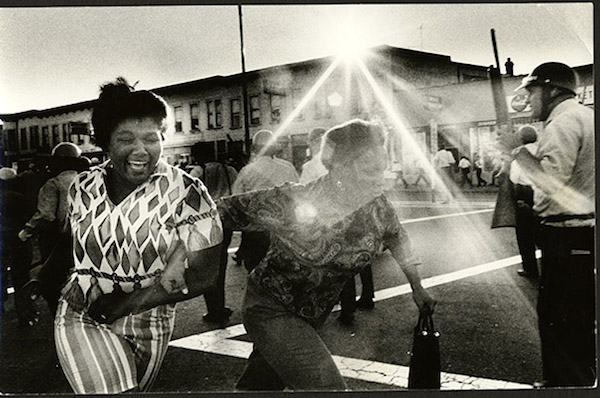
THESSALONIKI Greece—(Weekly Hubris)—1 September 2020—In the aftermath of the brutal killing of George Floyd this past May, much of the world has been jolted awake. In virtually every major city across the country, for more than three months now, African Americans have been spilling into the streets by the thousands, decrying police brutality, demanding justice and an end to systemic racism. Those chanting and raising their fists, though, are not just Blacks. Latinos, Asians and whites—young and old—have taken to the streets, most peaceful and determined, a few filled with the urge to destroy. And not only Americans. As the protests gained momentum, “Black Lives Matter” has become a rallying cry from Western Europe to South Korea, from Rio de Janeiro to Idlib, Syria, all marching in solidarity with African Americans while expressing outrage against their own country’s treatment of its minorities. It seems that that knee on George Floyd’s neck has made the world stand up and take stock of who we are, how we see people of color, and what experiences—personal as well as institutional—have shaped our attitudes toward race. We all have some self-examining to do.
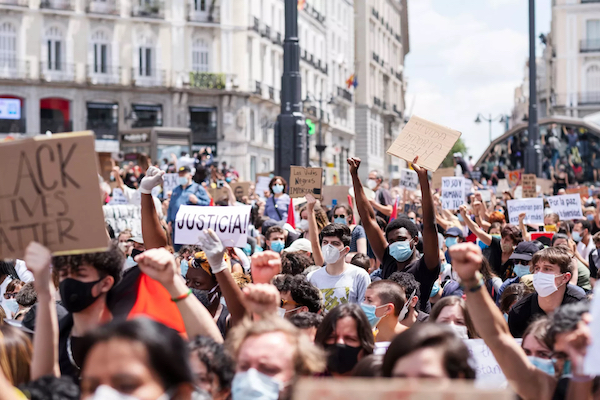
At 15, what did I know about police brutality and protests? I only knew that in the summer of that year, 1965, Watts erupted, and the rioting spread to San Francisco. And I was in the middle of it. Literally, in the middle—living in the Fillmore, the Harlem of the West, on the corner of Fulton and Steiner. Two months earlier I had moved from the Valley of the Moon, the sequestered environs of Hanna Boys Center in the wine country of northern California. Now I was in The City (as everybody called it), living in the “Club” (as we called it), in an all-Black neighborhood.
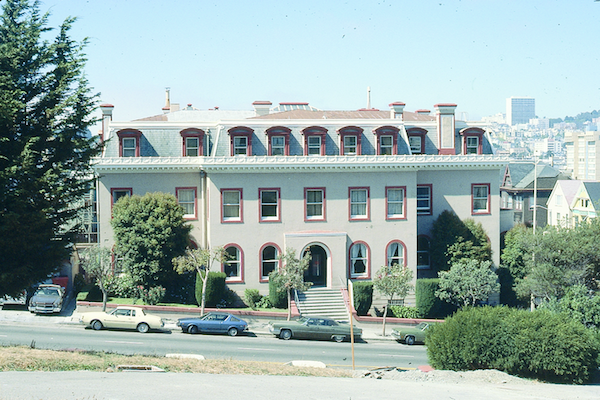
Some said that the run-down, three-story mansion I had moved into was built in the early 1900s and used to be the Archbishop’s house, that it survived the 1906 earthquake, even that Pope Pius XII once stayed there. Others claimed that before it became the San Francisco Boys’ Home it was a convent, then a boarding house, then a psychiatric hospital and rehab center. Monsignor Armstrong (I think I remember his name right), the head of the Club, would say it’s our “home,” but the counselors called it an orphanage (I wasn’t an orphan. I had parents, though neither really wanted me), and the kids would say it’s a reform school (though I wasn’t an angel, I had yet to go to juvie or jail, so certainly, at the time, didn’t need reform). In August of 1965 what was clear to me was that I, along with 30 other teenagers, mostly white, was smack in the middle of race riots. And, like everyone else, I was scared.
We could hear sirens all night and much of the day. When we dared open an upper-floor window, we could smell smoke, catch the ebb and flow of chanting, shouting, and intermittent screaming drifting up from Fillmore Street a block away. Bursts of gunfire now and then. Crowding into the Club’s small TV Room, we watched Huntley and Brinkley report on the rage engulfing our neighborhood and Hunter’s Point, spreading to Chicago and other cities as well. We saw images of shops being looted, police cars burning, drivers being pulled from their cars and beaten, phalanxes of police clubbing crowds of angry, bottle-throwing protestors.
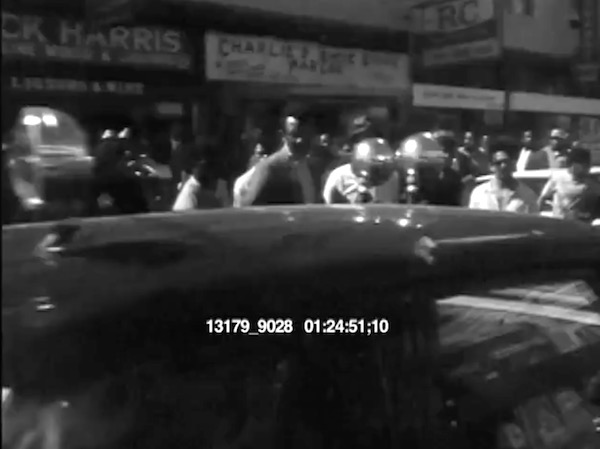
Prior to the uprising, I had been adjusting fairly well to my new environs. I was bedazzled by The City. Waiting at a bus stop on Webster, I’d be approached by street-walkers, some of whom would hover close to me and invite me to come have a good time with them. A few would even blow me a kiss as I boarded my bus. On occasion I’d transfer at Geary St., right in front of the original Fillmore Auditorium, which opened in December 1965. I didn’t have a clue about psychedelic music or the bands whose names appeared on the marquee. It wasn’t till my senior year in high school, when I was far away from San Francisco, that I got inklings of the “counterculture” and started listening to groups whose names I’d first seen while waiting for a bus: Big Brother and the Holding Company, The Grateful Dead, Jefferson Airplane, The Doors, Jimi Hendrix, etc.
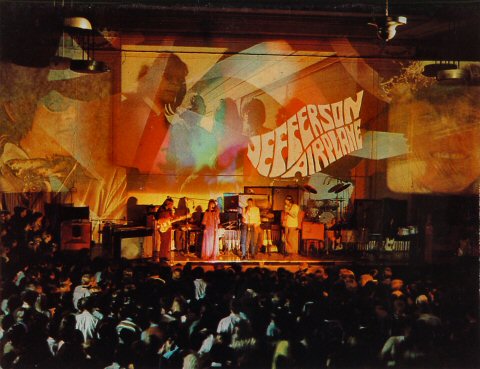
At 15, it wasn’t the counterculture I was assimilating into, but the African American. The rhythms blasting from cars and shops as I walked the streets became the music I was hungry for—Smokey Robinson, Sly and the Family Stone, Ike and Tina Turner, Otis Redding, The Supremes—I loved them all. And, really, I scarcely had a choice. The two or three times I had come home from a Market Street record shop with the likes of Donovan or The Beatles tucked under my arm, I was stopped a block or two from the Club. Guys hanging out on a corner would see I had LPs and accost me. If I wasn’t carrying R&B, they’d break the records and toss them away or hand them back to me. But once I started getting off the bus with Aretha Franklin and company, they’d let me pass (unless it was something they didn’t have yet) with a slap of our palms or a playful shove.
Before long, I was deeply into the music. I’d hide my transistor radio under my pillow to hear Sly Stone and Wolfman Jack late into the night. Since the first guys I hung out with were mostly Black (friends of other guys at the Club, who liked to tease the white kid tagging along), I’d go to their parties reeking of Jade East, wearing bright frilled shirts and suede shoes, and doing all I could to learn the Jerk, the Mashed Potato, the James Brown Skate (or at least fake them). Imitating the four or five African Americans and Chicanos living at the Club, I’d cake pomade onto my blond hair (not the least bit curly) and wrap my head at night in a scarf to protect my conked locks. None of that made any difference, though, in August of 65. No matter how many soul parties I’d attended, how I dressed or processed my hair, I was still white. I wouldn’t last five minutes out in the fury of The Fillmore.
*
At first it seemed the Club would be left pretty much alone. One of the counselors, Sonny (I think his name was), was Black. Though he lived with us while on duty, his home was somewhere in the neighborhood. So, the morning after the riots first broke out, he went out to talk to a few of his friends (gang leaders? influential brothers from the hood? nobody knew) to convince them to leave the orphanage alone. We were just a bunch of high school guys, no danger to anyone. He came back and told us we’d be OK as long as we didn’t go out.
The next afternoon, a group of four young locals, representatives of some sort, banged on our front door, demanding to see Sonny. While he was talking with them, one of our residents (Danny Chabot, as I recall), scared to the bone and, for some reason, angry as hell at the rioting and the fact that we couldn’t leave, filled a plastic trash bin with water and, from our second-floor study-hall window, dumped the whole thing onto that contingency of Bloods. I didn’t see him do it, but heard the yelling and saw Sonny, standing at the threshold, stunned and half-wet himself, apologizing, trying to calm the drenched reps down. A couple minutes later some of our guys started running around on the third floor, screaming at the top of their lungs for all of us to go hide, we were under attack!
That evening the reps returned with a small mob carrying bottles, rocks, and bats. They broke most of our first-floor windows, battered cars parked in front of the Club and tore off antennas. One of them saw a boy’s head sticking out of an upstairs window (it happened to be Danny), threw an antenna like a spear, and hit him behind the ear. Bleeding from his neck, Danny ran from room to room on the second floor, banging on doors, begging for help, and declaring that the race war had begun.
We never did find out how Sonny managed to calm down our raging neighbors without more damage being done. I know he promised that we would buy the reps new clothes. All of us boys had to pitch in to cover the cost. But that alone wouldn’t have assuaged them (and rightly so). Whatever arrangement he did make, it worked. In the end: no one stormed the Club, hurling rocks and Molotov cocktails at us while demanding we turn Danny over—though we were all sure that that was exactly what was about to happen, or even worse. The locals did make it clear, though: they’d beat to a pulp anyone who stepped outside our doors, and would make sure no one from outside got in. Only Sonny could come and go.
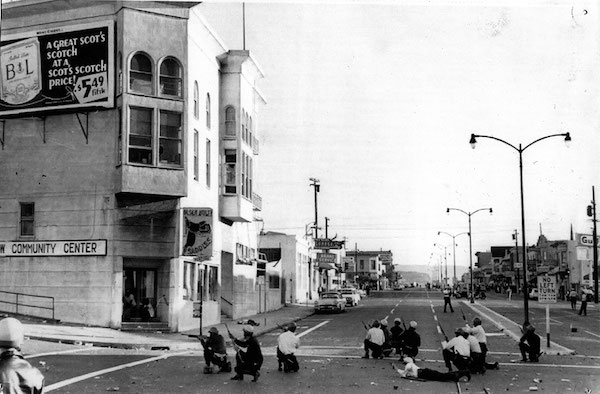
We spent the next three days in strict lockdown, watching TV, playing pool on the table in the basement, telling whoppers to each other about what we were sure was happening in the streets, listening to music in our rooms (R&B blasting from some, Rock ’n’ Roll from others), playing Monopoly and Clue (the only board games we had), and giving Sonny long lists of things to buy—cigarettes, Cokes, Fritos, Twinkies, beef jerky, corn nuts, ice cream sandwiches and the like—from a nearby market that had managed to stay open during the day throughout the riots. Without air conditioning, cooped up in mid-August swelter, we lost our tempers easily. Fights broke out now and then, but since the pecking order of “toughness” was pretty well established between us boys, no fight lasted for long.
After several days of unrest, the massive police presence snuffed out the rage, and we boys, cautiously at first, were able to leave. When I dared to venture out, scorched cars, boarded windows and gutted-out buildings were everywhere up and down Fillmore Street. Clusters of brooding men stood on street corners, while police eyed them warily from passing patrol cars. In the days that followed, shops and liquor stores slowly started opening, windows were replaced, the hulls of vehicles were hauled away, and police began dismantling barricades.
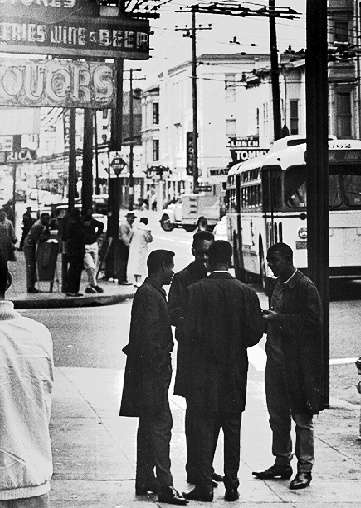
The uprising definitely had an impact on me. All along, my heart had been with the protestors, even if, at the same time, I was scared. From the first day I arrived in the Fillmore, I couldn’t avoid seeing the poverty and degradation, especially compared to the City’s white neighborhoods just a few blocks away. There was joy on display at times—people dancing on street corners, laughter and singing coming from open windows. But the misery was overwhelming—indigents sleeping in doorways, dumpster divers every couple blocks, old men and women shuffling along, begging for change. Broken windows and crumbling doorways.
I felt for the people I was living among. But after the riots, something else started churning inside me. As my junior year in my new high school progressed (and I turned 16), I began realizing that the rage I had seen on TV, the little of the violence I’d personally witnessed, the endless rumors we had told each other—they all seemed to bring out deep-seated anger in me. No longer was I interested in church or school. My Christian Brother teachers at Sacred Heart High were fools, not worth listening to or obeying. For the first time ever, I was failing classes, even English, cutting school two and three days at a time. I was angry at having to listen to Monsignor Armstrong’s hypocrisy (this sure as hell wasn’t a “home” and none of us were good Christian boys), angry at being bullied by counselors (not Sonny) and older boys, angry at having to live and go to school only with guys, angry at not having a girlfriend while being constantly told masturbation was evil—the list of my ire was getting longer and longer.
Mostly, though, I was furious at my father—outraged at his neglect, his leaving me in foster homes and children’s homes most of my life, his constant lies and declarations that he’d soon come get me and we’d be together, just the two of us. No stepmother to come between us. He had given me his name, Gordon, at birth. But that’s all he ever gave me.
As the months passed, I started spending more and more time away from the Club. Mark Rojas became my best friend. He lived in the Club but was from the Mission district. We’d hang out together on weekends and the days we cut classes, watching TV at his mother’s house, playing pool or pinball machines in a nearby bowling alley, picking fights now and then, going on shoplifting sprees on Market Street, cruising for girls when he could get his mother’s car. And when his mom (for some reason) started calling me “Don,” the name stuck. I was glad. To hell with Gordon.
And my rebellion would soon intensify. Mark was a great bullshitter, which was one reason I liked him. He always had good stories to tell. I enjoyed them even though I knew they were lies. And he was great at sweet-talking girls, always had two or three on a string. So when he came to the Club one afternoon with a souped-up Chevy Impala I’d never seen before, I believed him when he said it was his girlfriend’s. Later in the day, once he bragged about stealing it, I didn’t say anything. Bullshit or not, I was happy to be riding around in such eye-catching wheels. That night, while we were cruising through Golden Gate Park without lights (a thing we liked to do sometimes), cops pulled us over. I was OK with that, too. And even with spending a few nights in juvenile hall. Let my father stew on that for a while. In the end, Monsignor got the judge to drop the charges so I could come back to the Club.
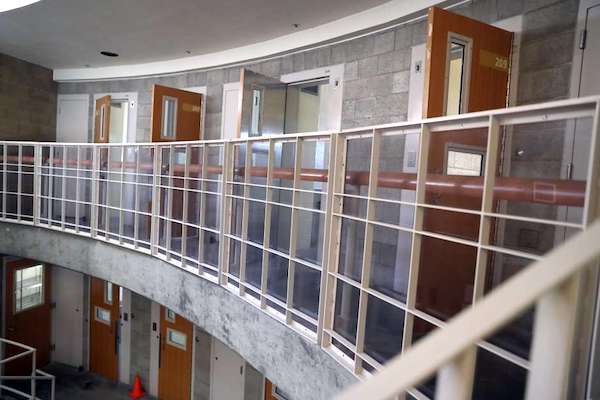
“Black” as I had tried to be (foolish or not), the riots “reformed” me—not toward goodness but toward deeper self-awareness and an impatient need to express and act upon my anger. Consciously or not, I was learning what so many African Americans have had to learn: how necessary, even purifying, rage is. How essential it is in breaking free from the false identities others foist upon us. And how essential expressing that rage is in holding on to an authentic self born of hard-won, newly acquired awareness. That’s what I saw in the riots: people exploding, tearing off the shackles of oppression, defying the authorities around them and defining who they were for themselves.
Thinking back on those events now, I know that the small struggles of one skinny white boy were nothing compared to the brutality and injustice African Americans have suffered for centuries, and still suffer. No matter how hard I tried back then to fit in, I wasn’t Black. I’d never experience the hatred and bigotry African Americans have had to live with every day. At best, I was just one more white guy exploiting Black culture for his own purposes. Nevertheless, I can’t ignore what I felt back then, how the furious outpouring against abuse and injustice I was witnessing at 15 made my own sense of injustice and abuse burst out as well. The Fillmore uprising gave me permission to rebel, against the powers trying to make me into what they wanted me to be, and against all those who felt little regard for who I actually was and could become.
*
My time living in the Fillmore ended abruptly in the late spring of 1966. When I got back to the Club from juvie, Monsignor ordered me to call my father. “This is no longer a home for you.” So there I was, packing my things yet again, raging at Monsignor, my teachers, the laws I had so casually broken; furious that I had to go back to my father, and even more furious that I still had his name. Upheaval in the Fillmore persisted as well, with worse riots occurring in the fall of 66, again in 67, and even more intensely in 68, after the assassination of Martin Luther King.
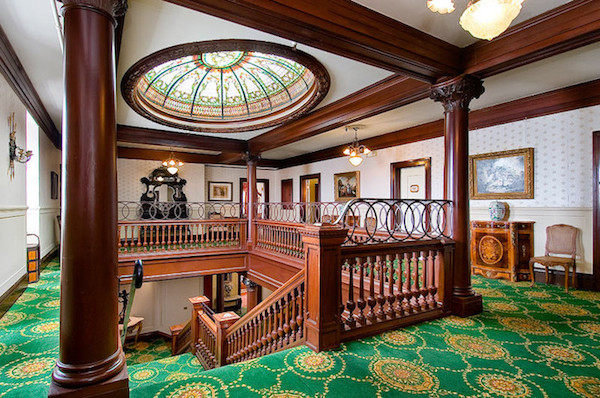
Five decades later, the Fillmore has a different identity. So do I. The Club no longer exists. That run-down house I lived in for a year is now a posh hotel, “The Archbishop’s Mansion,” a product of the overall gentrification of the district that began in the 90s. Five decades later, I still react viscerally to injustice, especially against Blacks, which is why it’s so gratifying to see systemic racism finally being called out on such a massive scale. Watching the news, I can’t help but remember how terrified I was at 15, yet how much I came to admire the outrage of my fellow Fillmore residents, how powerful their need was to rise up against those who would put a knee to their necks. Their fury, at a critical point in my life, showed me the way.
Five decades later, I no longer live in America. And my name is Don.
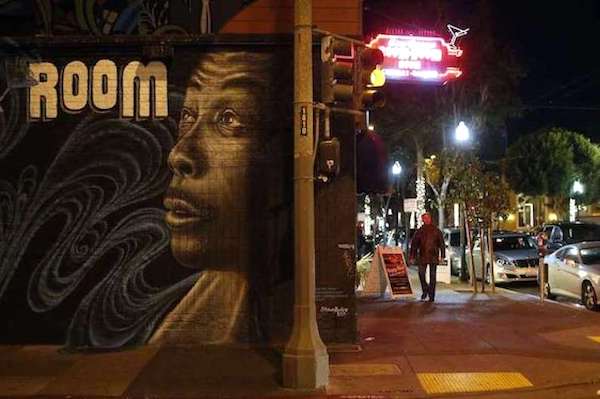
![]()
Author’s Note re. Video Clip: Video clip images are of the following: driving footage through the Fillmore. Two Black men standing on the corner of a run-down residential neighborhood. Children playing on the sidewalk. Shaky helicopter footage of a nighttime riot. Shaky handheld footage of police in riot gear, and a Black man being arrested. Police with guns speaking to Black men in hats. A Black woman in a housecoat looks on. White army soldiers with weapons. A police car driving down the street with crowds looking on. Nighttime footage of soldiers walking in formation, rifles out. Police leading two shirtless Black men over a fence. Sound footage of a Black man with a hat, talking about people being hurt in the riot. Silent footage of Black men being led away at gunpoint by police. Clouds rolling by overhead. Large sign in a storefront window: “Coleman’s Records Moved,” panning over to another store sign: “Club Cafe Open.” A door, barred and locked. Broken neon signs: “Chicago Barber Shop,” “Skating.” An empty lot seen through a chain-link fence. A motorcycle cop riding down the street. Credit: From “Oddball Films” https://www.oddballfilms.com/clip/13179_9028_fillmore2
Photo Credits: All images are from websites, more specifically:
Images 1 and 5 are from “Hunter’s Point/FoundSF,” http://www.foundsf.org/index.php?title=Hunters_Point_Uprising
Image 2 is from “Vox” (Getty Images), https://www.vox.com/2020/6/12/21285244/black-lives-matter-global-protests-george-floyd-uk-belgium
Image 3 is from “Diva” (Max Kirkeberg Collection), https://diva.sfsu.edu/collections/kirkeberg/bundles/224143
Image 4 is from “The Woodstock Whisperer,” https://woodstockwhisperer.info/2016/02/04/fillmore-auditorium-san-francisco/
Image 6 is from “The Fillmore: Black SF/FoundSF (third image),”
https://www.foundsf.org/index.php?title=The_Fillmore:_Black_SF
Image 7 is from the San Francisco Chronicle, June 10, 2019, https://www.sfchronicle.com/opinion/openforum/article/Open-Forum-San-Francisco-is-right-to-close-13966688.php
Image 8 is from “REDFIN,” (slide #20) https://www.redfin.com/CA/San-Francisco/1000-Fulton-St-94117/home/1296731
Image 9 is from the San Francisco Chronicle, January 9, 2006 (slide #1), https://www.sfchronicle.com/food/article/Fillmore-singing-blues-over-jazz-district-6747312.php
![]()
To order Don Schofield’s books, click the cover images here below:

